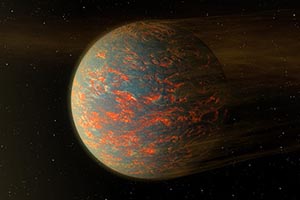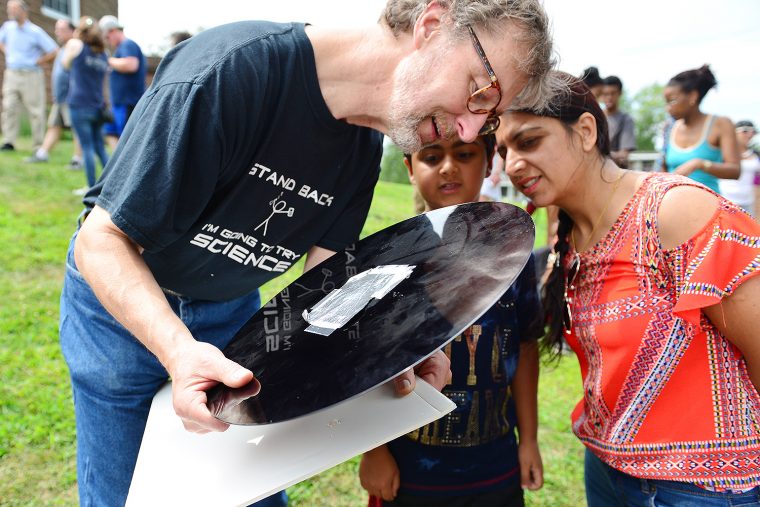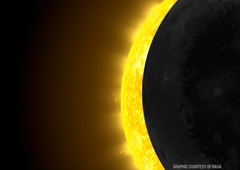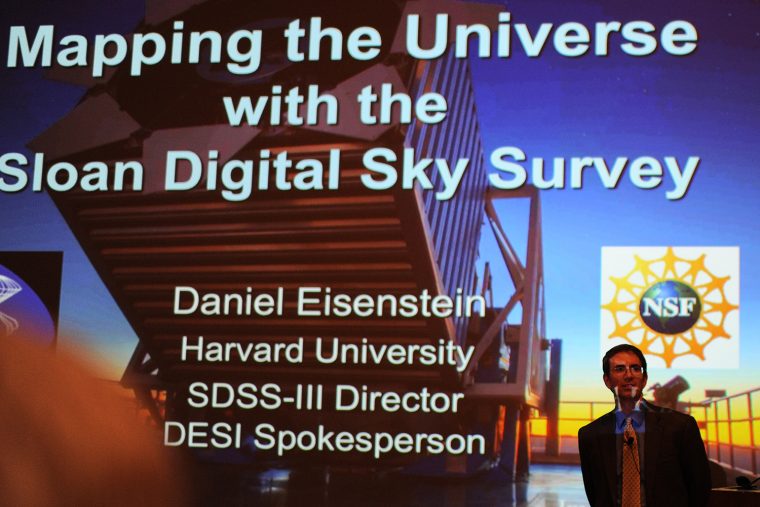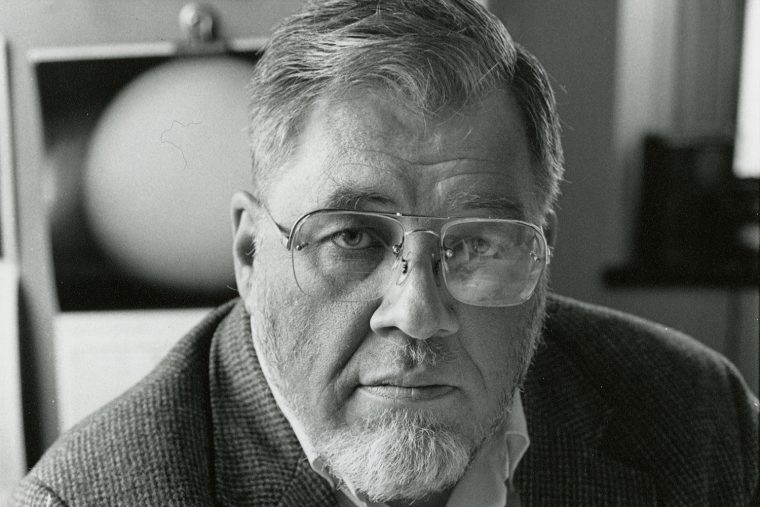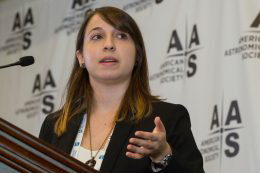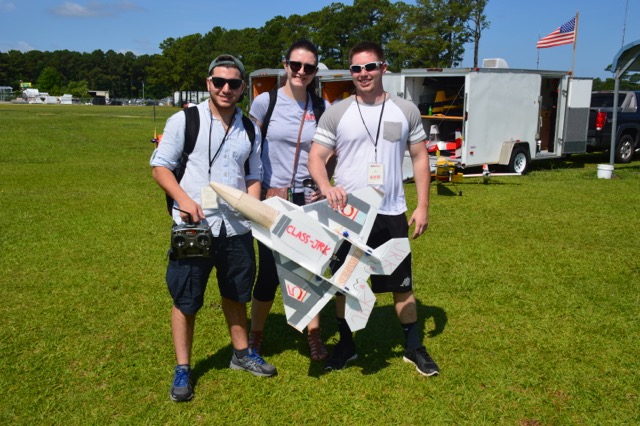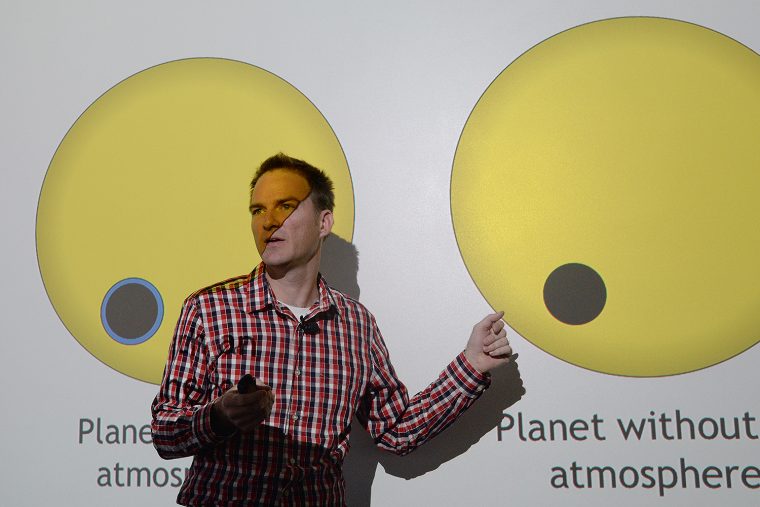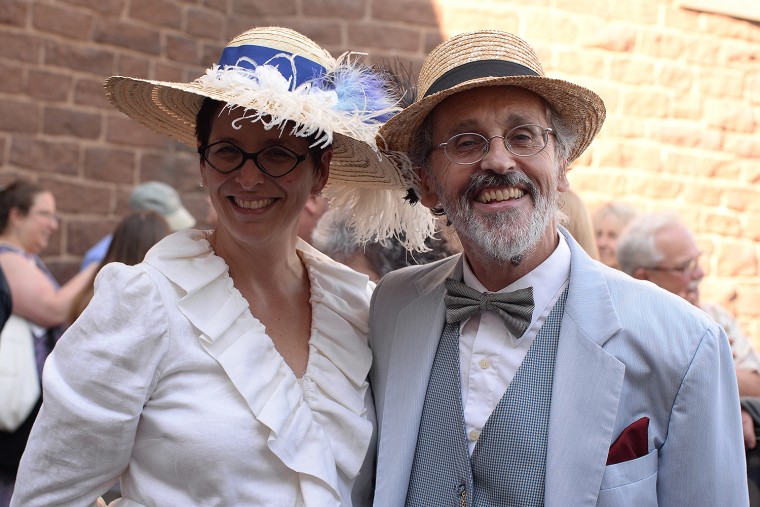A team of scientists from Wesleyan, led by Associate Professor of Astronomy Seth Redfield and graduate student Prajwal Niraula MA '18, has co-authored a paper on the discovery of three planets, or super-Earths, transiting around a nearby star, just 98 light-years away. “Super-Earths are slightly larger than Earth, and the three of them straddle the divide between the rocky planets like Earth and ice giants like Neptune,” explains Redfield. These planets were found using the Kepler Space Telescope. “Kepler has found thousands of exoplanets these last eight years, but this is the closest planetary system that Kepler has ever found, although closer planetary systems have been…
Wesleyan's Department of Astronomy hosted a public eclipse viewing on Aug. 21, outside the Van Vleck Observatory. Hundreds of Wesleyan and local community members attended this historic event. Although Middletown wasn't in the narrow path of totality, viewers still were able to witness about 65 percent of the sun disappear. In addition to telescopes and eclipse glasses for safely viewing the Sun, participants were encouraged to tour the Department of Astronomy's historical exhibition and see images from the 1925 solar eclipse that passed directly over Wesleyan. A live streaming feed of the eclipse also was shown in a classroom. (more…)
The campus and local community is invited to witness the partial eclipse of the Sun at Wesleyan's Van Vleck Observatory on Aug. 21. While Middletown isn't in the narrow path of totality, viewers should still be able to see about 65 percent of the Sun disappear. Telescopes for the family-friendly event will be set up at 1 p.m., and the eclipse will begin at approximately 1:20 p.m., with mid-eclipse falling at approximately 2:40 p.m. The event is hosted by Wesleyan's Astronomy Department and is free of charge. (more…)
Jim Greenwood, assistant professor of earth and environmental sciences, and Bill Herbst, the John Monroe Van Vleck Professor of Astronomy, professor of integrative sciences, have received a research award from NASA in the amount of $550,000 for a program titled “Experimental simulations of chondrule formation by radiative heating of hot planetesimals." The grant will allow Greenwood and Herbst to hire a post-doctoral fellow who will work in Greenwood’s lab in Exley Science Center to reproduce chondrules — small spherules of melted rock that formed early in the history of the solar system and hold clues to the origin of the planets.…
(more…)
Arthur Reinhold Upgren, the John Monroe Van Vleck Professor of Astronomy, Emeritus, died on Jan. 21, a month before his 84th birthday. Upgren received his PhD from Case Western Reserve University before coming to Wesleyan as an assistant professor in 1966. He was the Director of the Van Vleck Observatory from 1973 to 1993. He held his endowed chair from 1982 until his retirement in 2000. Upgren was an author or co-author of 285 publications in the astronomical literature, including one that appeared in 2016. His research interests were in the areas of parallax (distance measurement) of stars and galactic…
Wesleyan Associate Professor of Astronomy Seth Redfield and astronomy student Julia Zachary '17 recently reported at the 229th meeting of the American Astronomical Society on their research using data from the Hubble Space Telescope combined with two Voyager spacecraft probes, both very long-lived and successful NASA missions. The findings were shared in dozens of news outlets from the U.S. to India to Afghanistan. According to Nature.com, "The work is a rare marriage of two of the most famous space missions — and an unprecedented glimpse at the realm between the stars." “If the Voyager spacecraft and the Google Street View car are going…
Bill Herbst, the John Monroe Van Vleck Professor of Astronomy; Martha Gilmore, the George I. Seney Professor of Geology; Wilson Cauley, a post-doctoral fellow; and Nicole Arulanantham MA ’15 are the co-authors of a paper forthcoming in The Astrophysical Journal. The paper is based on Arulanantham's thesis research at Wesleyan. The paper also was featured in the December newsletter of the Gemini Observatory, an international observatory based in Hawaii and Chile. “The subject of the paper, a star known as KH 15D, was recognized as an important and interesting object in the 1990s through observations made on the Wesleyan campus by undergraduate and graduate students,” Herbst explained.…
Four Wesleyan undergraduate students have received grants from NASA's Connecticut Space Grant Consortium. Astronomy major Hannah Fritze '18 was awarded $5,000 for an Undergraduate Research Fellowship Grant titled, “Searching for Intermediate Mass Black Holes in Ultraluminous X-ray Binaries.” This grant will support her research this coming semester on black holes with Roy Kilgard, support astronomer and research associate professor of astronomy. Avi Stein '17, who is majoring in astronomy, was awarded $1,000 for a Student Travel Grant. He will be presenting his research on Venus—conducted with Martha Gilmore, the George I. Seney Professor of Geology, professor of earth and environmental sciences—at…
(more…)
Meredith Hughes, assistant professor of astronomy, is the co-author of "Debris Disks in the Scorpius-Centaurus OB Association Resolved by Alma," published in The Astrophysical Journal, Vo. 828, No. 1. Jesse Lieman-Sifry '15 also is a co-author of the article. In addition, the international weekly journal of science Nature mentioned the article in a Sept. 8 publication. The co-authors explored the idea of carbon-monoxide potentially being in large-star disks. As explained in her abstract, “Stars twice the size of the sun can feature carbon-monoxide-rich gas disks around them, contrary to the expectation that ultraviolet radiation would have stripped away the gas.” Hughes used the…
On June 16, the Astronomy Department hosted the Van Vleck Observatory Centennial Symposium: A Celebration of Astronomy at Wesleyan University. Wesleyan’s observatory has been celebrating its centennial during the 2015-16 academic year, with a series of events and an exhibition, "Under Connecticut Skies." The symposium was co-sponsored by the Astronomical Society of Greater Hartford (ASGH), and held in conjunction with StarConn. The exhibition was spearheaded by Roy Kilgard, support astronomer and research associate professor of astronomy, and Amrys Williams, visiting assistant professor of history. At the meeting, they discussed the exhibition, which was developed by a team of faculty, students and staff using the observatory's extensive collection of…


